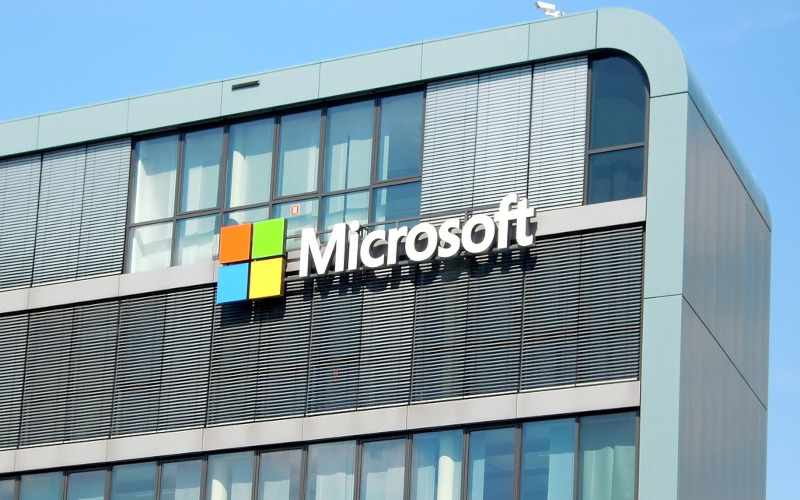Microsoft published a report on the results of the fourth quarter of the 2024 fiscal year, which ended on June 30: the company received revenue of $67.7 billion and net profit of $22 billion, which corresponds to growth of 15% and 10%, respectively. The cloud solutions segment continues to grow, while hardware sales continue to fall.

Image source: efes/pixabay.com
Revenue from Microsoft’s Intelligent Cloud business, which includes server products and cloud services, grew 19% year over year to $28.5 billion. Revenue from this business now accounts for nearly 45% of Microsoft’s total revenue. At the same time, performance in the consumer device segment continues to fall: revenue from Xbox hardware decreased again, and the Surface segment has shown decline for seven consecutive quarters. Windows revenue from OEMs, the price they pay to license the PC OS, grew 4% year-over-year. PC shipments have been growing for three consecutive quarters, Gartner analysts noted, and this was reflected in revenue growth from Microsoft OEM partners over the same period.
By the end of the fourth quarter of fiscal 2024, Microsoft launched a new segment of Copilot Plus PC devices – laptops based on Qualcomm chips went on sale on June 18, and the Surface Pro 10 and Surface Laptop 7 were released in June. But the impact of their sales on Microsoft’s financial performance can only become noticeable in the new quarter. As a result, Surface revenue, or device revenue as Microsoft now calls it, decreased by 11% during the reporting period. The company last showed growth in this area in the first quarter of fiscal 2023 (ended September 30, 2022). Microsoft’s device revenue will continue to decline by low to mid-single digit percentages in the new quarter, company CFO Amy Hood said; Windows OEM licensing revenue is expected to be stable “in line with the PC market,” the executive added.
Revenue from Xbox content and services, including Xbox Game Pass, showed year-on-year growth of 61% at the end of the quarter, of which Activision Blizzard contributed 58 percentage points. – accordingly, without it the positive dynamics would have remained, but amounted to only 3%. In February, Microsoft reported that Xbox Game Pass had grown to 34 million subscribers, including Xbox Game Pass Core (formerly Xbox Live Gold) users. The company intends to soon launch the Xbox Game Pass Standard plan, which will become the main plan for new subscribers – console owners. Microsoft recently added last year’s Call of Duty: Modern Warfare 3 to Xbox Game Pass, which will be followed by Call of Duty: Black Ops 6, the next installment in Activision’s popular franchise, before the end of the year.

In September, the price of Xbox Game Pass Ultimate and PC Game Pass subscriptions is expected to increase to $19.99 and $11.99, respectively. But console sales are still showing more than modest figures – over the past quarter, revenue from Xbox equipment fell by as much as 42%. By the end of the year, Microsoft plans to release the Xbox Series X in white and without a disc drive, as well as a new special version of the Xbox Series X Galaxy Black. Cloud gaming in the Microsoft ecosystem is increasingly doing without physical consoles – the Xbox TV app has already appeared on some Amazon Fire TV models. With low revenue from Xbox hardware, Microsoft’s revenue from games as a whole showed an increase of 44%, which was again facilitated by the effect of Activision Blizzard: the publisher’s contribution amounted to 48 percentage points, that is, without it, the segment would have dropped by 4%.
This time, the company did not provide new information on the number of Xbox Game Pass subscribers, but the company’s CEO Satya Nadella said that the number of active gamers across all platforms and devices has exceeded 500 million people. In the new quarter, revenue from Xbox content and services will show growth of “50% to 55%,” Amy Hood said; total gaming revenue will grow by 35%, including 40 p.p. Activision Blizzard, and Xbox hardware revenue “will decline again year-on-year.”
Microsoft’s cloud and office product revenues continued to grow, as expected, in the fourth quarter of fiscal 2024. Enterprise cloud and office product revenue increased 12%; revenue from Office 365 for business – by 13%. Consumer Office revenue grew 3% year over year; the number of Microsoft 365 consumer subscribers increased by 10% to 82.5 million. Revenue from LinkedIn grew by 10% during the reporting period. Server products and cloud services showed an increase of 21%; revenue from Azure and other cloud services grew 29%. Although analysts expected more from Azure, which is why Microsoft shares still sank in trading on Nasdaq.
Investors continue to closely monitor any signs of growth in Microsoft’s AI revenue. In the last quarter, AI accounted for 8 p.p. Azure revenue growth, which is slightly higher than the previous quarter. The AI segment is growing faster than overall Azure revenue, Ms. Hood noted, with additional Azure growth driven by infrastructure investments and demand expected in the second half of fiscal 2025. In the first quarter of fiscal 2025, Azure revenue growth will be around 28-29%. The company also said that following a successful financial year, its employees will receive an additional bonus equal to 10-25% of their regular annual bonus.